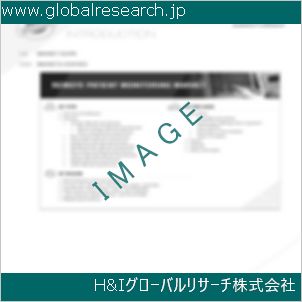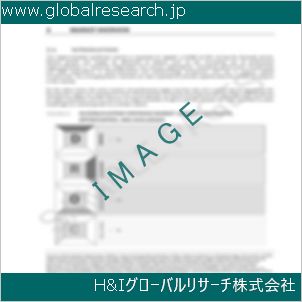Table of Contents
1 Industry Overview of Chloroform
1.1 Definition and Specifications of Chloroform
1.1.1 Definition of Chloroform
1.1.2 Specifications of Chloroform
1.2 Classification of Chloroform
1.3 Applications of Chloroform
1.3.1 Nuclear Application
1.3.2 Non-Nuclear Application
1.4 Industry Chain Structure of Chloroform
1.5 Industry Overview and Major Regions Status of Chloroform
1.5.1 Industry Overview of Chloroform
1.5.2 Global Major Regions Status of Chloroform
1.6 Industry Policy Analysis of Chloroform
1.7 Industry News Analysis of Chloroform
2 Manufacturing Cost Structure Analysis of Chloroform
2.1 Raw Material Suppliers and Price Analysis of Chloroform
2.2 Equipment Suppliers and Price Analysis of Chloroform
2.3 Labor Cost Analysis of Chloroform
2.4 Other Costs Analysis of Chloroform
2.5 Manufacturing Cost Structure Analysis of Chloroform
2.6 Manufacturing Process Analysis of Chloroform
3 Technical Data and Manufacturing Plants Analysis of Chloroform
3.1 Capacity and Commercial Production Date of Global Chloroform Major Manufacturers in 2023
3.2 Manufacturing Plants Distribution of Global Chloroform Major Manufacturers in 2023
3.3 R&D Status and Technology Source of Global Chloroform Major Manufacturers in 2023
3.4 Raw Materials Sources Analysis of Global Chloroform Major Manufacturers in 2023
4 Capacity, Production and Revenue Analysis of Chloroform by Regions, Types and Manufacturers
4.1 Global Capacity, Production and Revenue of Chloroform by Regions 2019-2024
4.2 Global and Major Regions Capacity, Production, Revenue and Growth Rate of Chloroform 2019-2024
4.3 Global Capacity, Production and Revenue of Chloroform by Types 2019-2024
4.4 Global Capacity, Production and Revenue of Chloroform by Manufacturers 2019-2024
5 Price, Cost, Gross and Gross Margin Analysis of Chloroform by Regions, Types and Manufacturers
5.1 Price, Cost, Gross and Gross Margin Analysis of Chloroform by Regions 2019-2024
5.2 Price, Cost, Gross and Gross Margin Analysis of Chloroform by Types 2019-2024
5.3 Price, Cost, Gross and Gross Margin Analysis of Chloroform by Manufacturers 2019-2024
6 Consumption Volume, Consumption Value and Sale Price Analysis of Chloroform by Regions, Types and Applications
6.1 Global Consumption Volume and Consumption Value of Chloroform by Regions 2019-2024
6.2 Global and Major Regions Consumption Volume, Consumption Value and Growth Rate of Chloroform 2019-2024
6.3 Global Consumption Volume and Consumption Value of Chloroform by Types 2019-2024
6.4 Global Consumption Volume and Consumption Value of Chloroform by Applications 2019-2024
6.5 Sale Price of Chloroform by Regions 2019-2024
6.6 Sale Price of Chloroform by Types 2019-2024
6.7 Sale Price of Chloroform by Applications 2019-2024
6.8 Market Share Analysis of Chloroform by Different Sale Price Levels
7 Supply, Import, Export and Consumption Analysis of Chloroform
7.1 Supply, Consumption and Gap of Chloroform 2019-2024
7.2 Global Capacity, Production, Price, Cost, Revenue, Supply, Import, Export and Consumption of Chloroform 2019-2024
7.3 USA Capacity, Production, Price, Cost, Revenue, Supply, Import, Export and Consumption of Chloroform 2019-2024
7.4 EU Capacity, Production, Price, Cost, Revenue, Supply, Import, Export and Consumption of Chloroform 2019-2024
7.5 China Capacity, Production, Price, Cost, Revenue, Supply, Import, Export and Consumption of Chloroform 2019-2024
7.6 Japan Capacity, Production, Price, Cost, Revenue, Supply, Import, Export and Consumption of Chloroform 2019-2024
8 Major Manufacturers Analysis of Chloroform
8.1 Manufacturer One
8.1.1 Company Profile
8.1.2 Product Picture and Specifications
8.1.2.1 Type I
8.1.2.2 Type II
8.1.2.3 Type III
8.1.3 Capacity, Production, Price, Cost, Gross and Revenue
8.1.4 Contact Information
8.2 Manufacturer Two
8.2.1 Company Profile
8.2.2 Product Picture and Specifications
8.2.2.1 Type I
8.2.2.2 Type II
8.2.2.3 Type III
8.2.3 Capacity, Production, Price, Cost, Gross and Revenue
8.2.4 Contact Information
8.3 Manufacturer Three
8.3.1 Company Profile
8.3.2 Product Picture and Specifications
8.3.2.1 Type I
8.3.2.2 Type II
8.3.2.3 Type III
8.3.3 Capacity, Production, Price, Cost, Gross and Revenue
8.3.4 Contact Information
8.4 Manufacturer Four
8.4.1 Company Profile
8.4.2 Product Picture and Specifications
8.4.2.1 Type I
8.4.2.2 Type II
8.4.2.3 Type III
8.4.3 Capacity, Production, Price, Cost, Gross and Revenue
8.4.4 Contact Information
8.5 Manufacturer Five
8.5.1 Company Profile
8.5.2 Product Picture and Specifications
8.5.2.1 Type I
8.5.2.2 Type II
8.5.2.3 Type III
8.5.3 Capacity, Production, Price, Cost, Gross and Revenue
8.5.4 Contact Information
…
9 Marketing Trader or Distributor Analysis of Chloroform
9.1 Marketing Channels Status of Chloroform
9.2 Traders or Distributors with Contact Information of Chloroform by Regions
9.3 Ex-work Price, Channel Price and End Buyer Price Analysis of Chloroform
9.4 Regional Import, Export and Trade Analysis of Chloroform
10 Industry Chain Analysis of Chloroform
10.1 Upstream Major Raw Materials Suppliers Analysis of Chloroform
10.1.1 Major Raw Materials Suppliers with Contact Information Analysis of Chloroform
10.1.2 Major Raw Materials Suppliers with Supply Volume Analysis of Chloroform by Regions
10.2 Upstream Major Equipment Suppliers Analysis of Chloroform
10.2.1 Major Equipment Suppliers with Contact Information Analysis of Chloroform
10.2.2 Major Equipment Suppliers with Product Pictures Analysis of Chloroform by Regions
10.3 Downstream Major Consumers Analysis of Chloroform
10.3.1 Major Consumers with Contact Information Analysis of Chloroform
10.3.2 Major Consumers with Consumption Volume Analysis of Chloroform by Regions
10.4 Supply Chain Relationship Analysis of Chloroform
11 Development Trend of Analysis of Chloroform
11.1 Capacity, Production and Revenue Forecast of Chloroform by Regions and Types
11.1.1 Global Capacity, Production and Revenue of Chloroform by Regions 2024-2029
11.1.2 Global and Major Regions Capacity, Production, Revenue and Growth Rate of Chloroform 2024-2029
11.1.3 Global Capacity, Production and Revenue of Chloroform by Types 2024-2029
11.2 Consumption Volume and Consumption Value Forecast of Chloroform by Regions, Types and Applications
11.2.1 Global Consumption Volume and Consumption Value of Chloroform by Regions 2024-2029
11.2.2 Global and Major Regions Consumption Volume, Consumption Value and Growth Rate of Chloroform 2024-2029
11.2.3 Global Consumption Volume and Consumption Value of Chloroform by Types 2024-2029
11.2.4 Global Consumption Volume and Consumption Value of Chloroform by Applications 2024-2029
11.3 Supply, Import, Export and Consumption Forecast of Chloroform
11.3.1 Supply, Consumption and Gap of Chloroform 2024-2029
11.3.2 Global Capacity, Production, Price, Cost, Revenue, Supply, Import, Export and Consumption of Chloroform 2024-2029
11.3.3 USA Capacity, Production, Price, Cost, Revenue, Supply, Import, Export and Consumption of Chloroform 2024-2029
11.3.4 EU Capacity, Production, Price, Cost, Revenue, Supply, Import, Export and Consumption of Chloroform 2024-2029
11.3.5 China Capacity, Production, Price, Cost, Revenue, Supply, Import, Export and Consumption of Chloroform 2024-2029
11.3.6 Japan Capacity, Production, Price, Cost, Revenue, Supply, Import, Export and Consumption of Chloroform 2024-2029
12 New Project Investment Feasibility Analysis of Chloroform
12.1 New Project SWOT Analysis of Chloroform
12.2 New Project Investment Feasibility Analysis of Chloroform
13 Conclusion of the Global Chloroform (CAS 67-66-3) Industry 2024 Market Research Report
| ※参考情報 クロロホルム(Chloroform)は、化学式 CHCl₃ をもつ有機化合物で、CAS番号は 67-66-3 です。この化合物は無色の液体であり、甘い香りを持ち、その特性からさまざまな用途で利用されています。クロロホルムはノボリン酸塩の一部でもあり、その化学的性質から多くの化学反応において重要な役割を果たしています。 クロロホルムは、主に塩素化水素とメタンから合成されることが多く、また自然界でも微量が生成されることがあります。化学的には、クロロホルムは非極性溶媒であり、さまざまな有機物を溶解する能力があります。この特性は、クロロホルムを化学実験や工業プロセスでの溶媒として用いる理由の一つです。 また、クロロホルムは揮発性の物質であり、常温で容易に蒸発します。この性質は、実験室や工業環境での取り扱いにおいて注意が必要であり、適切な換気や防護具が求められます。クロロホルムは水にはほとんど溶けませんが、有機溶媒にはよく溶けるため、他の化合物との反応や分離に用いられることがあります。 クロロホルムの用途は広範囲にわたります。かつては麻酔薬として非常に普及しましたが、麻酔作用の安全性や副作用についての懸念から、現在は主に工業用途や研究用途に限られています。具体的には、有機合成の溶媒、分析化学の試薬、抽出媒介として利用されています。また、医薬品の中間体や農薬の製造にも使われています。 クロロホルムの関連技術としては、抽出技術や分離技術が挙げられます。特に、その高い溶解性を利用して有機化合物の抽出を行う際に用いられることが多いです。例えば、クロロホルムを使用した液-liquid抽出法では、目的の化合物を効率的に分離することが可能です。この技術は、食品、環境、医療などさまざまな分野で利用されています。 しかしながら、クロロホルムは健康に対するリスクも伴う物質です。吸入や皮膚接触により、めまいや頭痛、さらには肝臓や腎臓に対する有害な影響を及ぼすことがあります。長期的な暴露は、発癌性のリスクを高める可能性もあるため、その取り扱いには十分な注意が必要です。これらの理由から、クロロホルムは法的に規制されている場合が多く、特にその使用に関して厳格な基準が設けられています。 さらに、環境に対する影響も無視できません。クロロホルムは水質汚染を引き起こす可能性があり、生態系への悪影響が懸念されています。したがって、クロロホルムを扱う際は、適切な処理や廃棄方法を遵守することが求められます。また、代替物質の開発や、クロロホルムの使用を減らす努力も進められています。 化学産業におけるクロロホルムの役割は依然として重要ですが、その安全性や環境への影響についての配慮が必要です。今後の研究や技術の進展により、より安全で環境に優しい方法での利用が期待されています。クロロホルムの特性や用途を理解することで、その適切な利用と共に、リスクを最小限に抑えることが求められます。 |
❖ 免責事項 ❖
http://www.globalresearch.jp/disclaimer












